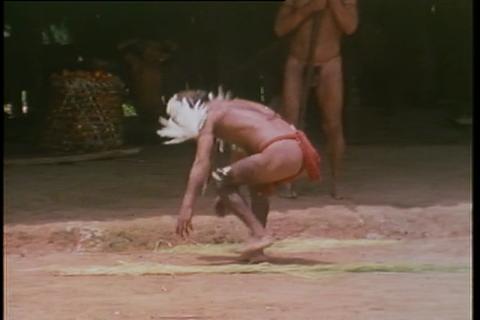
Having a background in dance, I have always taken an interest in the importance of dance in various cultures. This image titled in German “Waika (Venezuela, Orinoco-Quellgebiet): Palmfruchtfest : Schmücken der Gäste und “bleigei”-Tanz” translates to “Waika (Venezuela, Orinoco spring area): Palm fruit festival: decorating the guests and “lead egg” dance.” The image depicts a man wearing very little clothing aside from a band around his waist and feathers on his shoulders. While there are many reasons for dance, the title of the image suggests that this image was in celebration of the Palm Fruit Festival in Venezuela. The term “lead egg” does not provide much information, but it is perhaps linked to the feathers draping the dancer’s shoulders.
To the German photographer, this dance may have been different from anything he had ever seen before. However, dance is a very important art in many cultures. The preservation of culture in Latin America is especially important because of the colonial and imperialistic attempts at erasure. Throughout history, the colonial powers of Britain, Spain, and Portugal actively attempted to “modernize” or “Europeanize” Latin America. This was done through erasing Latin American history in an attempt to replace it with European history. Even simple aspects of culture such as dance are extremely important for the preservation of culture in Latin America. Furthermore, it is important to preserve this culture for historical purposes. European attempts at erasing indigenous culture are not only detrimental to the one society, they put our understanding of history at risk.
Source:
Jerome Robbins Dance Division, The New York Public Library. “Waika (Venezuela, Orinoco-Quellgebiet)” The New York Public Library Digital Collections. 1969. http://digitalcollections.nypl.org/items/4caf8da0-3433-0131-ef50-3c075448cc4b
